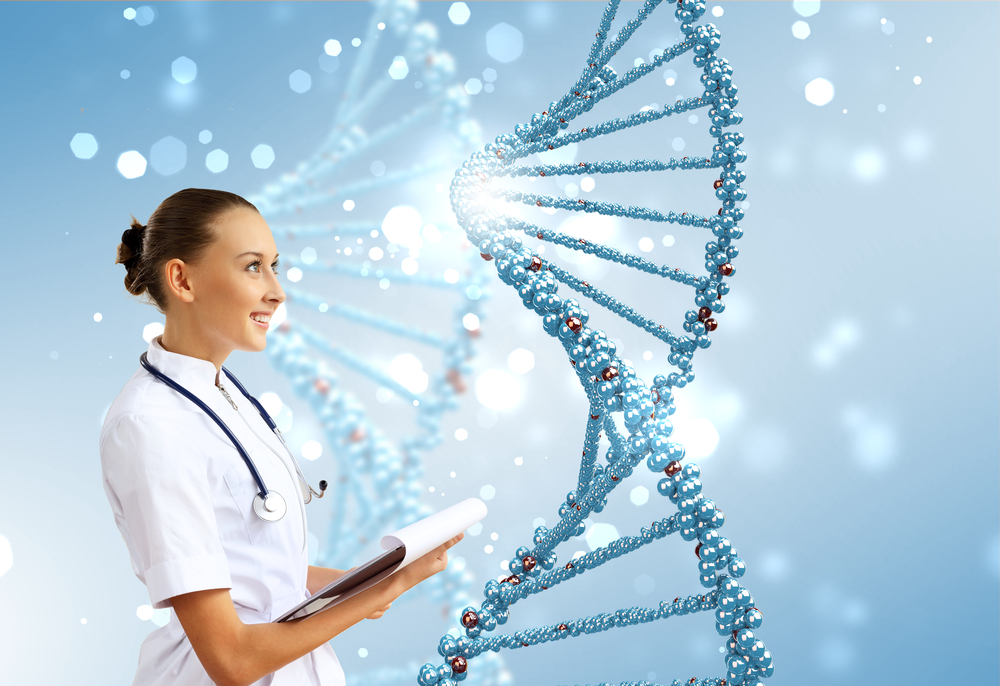Two Mutations Seen to Help Identify SMA Carriers, Allowing Better Family Counseling

Two specific mutations may help in identifying people who are carriers of spinal muscular atrophy (SMA) — those who do not have the disease but can pass it to children — and should be aware before starting a family, a study from Spain reports.
The study, “Utility of two SMN1 variants to improve spinal muscular atrophy carrier diagnosis and genetic counselling,” was published in the European Journal of Human Genetics.
Each person has 46 chromosomes — rodlike structures where genes are located — arranged in 23 pairs, within which one chromosome is inherited from the mother and the other from the father.
In genetic diseases such as SMA, the disease-causing mutations are passed from parents to their children through the genes in their chromosomes.
SMA results from mutations in the survival motor neuron 1 (SMN1) gene, located in chromosome five and inherited in an autosomal recessive manner. This means a child with SMA has two defective copies of that gene, one from each parent.
Those parents have one mutated and one healthy gene — meaning they themselves don’t have SMA but are carriers.
Join our Forums to learn more about these gene mutations!
Since SMA is one of the most lethal genetic disorders, with a carrier frequency of 1 in 40 to 1 in 60 people, identifying carriers is essential for genetic counseling of adults who are planning families.
Identification relies on an accurate determination of the number of SMN1 gene copies, with people with only one copy considered carriers (called 1/0 carriers). However, some carriers lack SMN1 in one of their chromosomes, having instead two SMN1 copies in the other (2/0 carriers) — and are wrongly identified as non-carriers.
Two mutations — c.*3 + 80 T > G and c.*211_*212del — in the SMN1 gene are associated with the presence of two SMN1 copies in one chromosome in the Ashkenazi Jewish population. This association was also observed in Africans, who have a higher-than-usual frequency of two SMN1 copies in one chromosome.
To determine whether these two mutations could be useful in identifying 2/0 carriers in other racial and ethnic groups, the researchers analyzed their presence and frequency in 270 Spanish individuals (160 SMA non-carriers, 74 SMA carriers, and 36 SMA patients).
While both mutations were almost completely absent in people with a single SMN1 copy in a chromosome (0.33%), they were frequently found in those with two SMN1 copies in one chromosome (18.75%).
Around 20% of these 2/0 SMA carriers had one or both mutations, compared to none in non-carriers (those with one SMN1 gene per chromosome).
Both mutations were found in six of the seven 2/0 carriers analyzed. Researchers thought this result might be because all these 2/0 carriers were from the Canary Islands, a Spanish archipelago with considerable African influence.
In particular, the c.*211_*212del mutation was found in 20% of SMA patients with a disease-causing mutation that creates an SMN1 gene mixed with parts of the SMN2 gene — a second but much less functional SMN gene — suggesting this mutation may be associated with chromosomal rearrangements.
Considering these mutations were not found in a majority of those carrying two SMN1 copies in one chromosome or with the SMN1-SMN2 hybrid gene, their absence in a person with two SMN1 copies does not exclude the possibility that he or she is a 2/0 SMA carrier (risk of 1/188), the researchers said.
However, the presence of one or both mutations assures — with almost 100% certainty — that an individual with two copies of SMN1 is a 2/0 carrier.
“Although absence of these variants does not exclude that a particular individual is a 2/0 SMA carrier, their presence is valuable to substantially increase residual risk in putative carriers, thus improving genetic counselling,” the researchers concluded.







